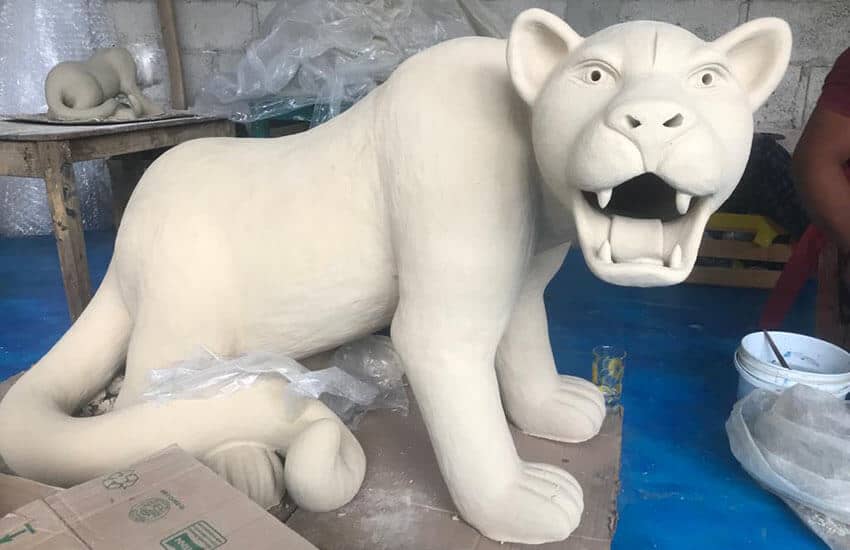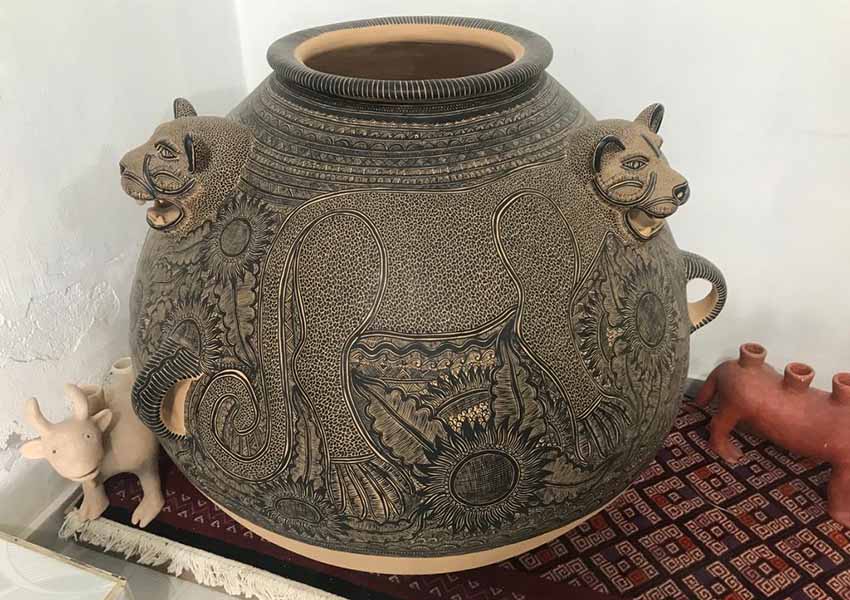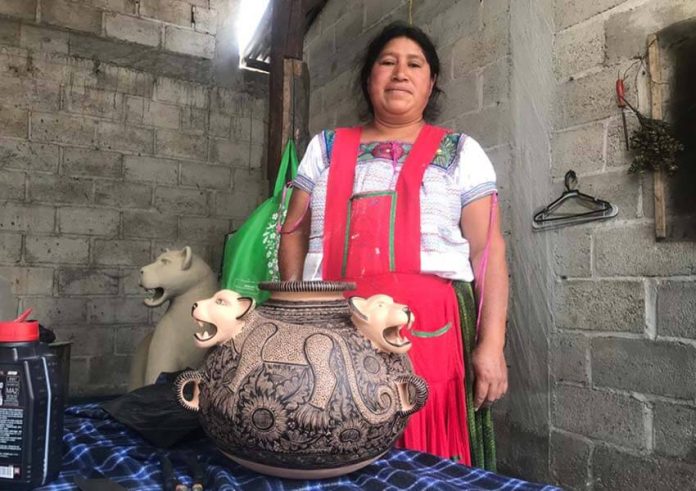In the Tzeltal indigenous community of Amatenango del Valle, half an hour outside of San Cristobal de las Casas, Chiapas, colorful splashes of traditional pottery mark the town out as unique and cement its position as a Pueblo Magico.
In a town renowned for the quality of its craftsmanship, one of its most notable artisans is 40-year-old Juana Gómez Ramírez, a celebrated maker of ceramic jaguars.
The jaguar, a sacred animal for the Tzeltal and other ancient indigenous cultures, has been an object of worship among Mayan peoples for millennia. It symbolizes the power and ferocity of the deities. Gómez fixes this essence of the jaguar in clay, honing her community’s unwritten history into tangible form.
Her story begins with her mother, Feliciana Ramírez, and her mother before her, who both sold their wares on the side of the road in the same pueblo in which Juana and her family still reside. Now Gómez, alongside a loose cooperative of artisans and family, makes life-sized jaguars that are painstakingly crafted over the course of weeks — sometimes even months — and then hand painted in minute detail.
“I have never actually seen a jaguar, but I am a dreamer,” she said, standing next to one of the creations in her workshop. “I was inspired by the pictures in the textbooks we used as children in school, and I made my first statue at the age of 12.”

Since then, Gómez and her family, to whom she has handed her knowledge of the craft, have existed at the spaces between international fame and the relative isolation of an unknown Chiapas indigenous community. On the one hand, her jaguars have made their way to exhibitions and auctions in the United States, Belgium, England, Spain and Australia. In 2013, she was recognized as a Grand Master of Popular Art. Often, there is a two-year waiting list for her commissioned works due to the time it takes to create the jaguars and the sheer number of people seeking her artwork.
But on the other hand, despite her international reach, her jaguars are fundamentally Tzeltal: they are made of the community, by the community. The statues are all unique and are often transposed from the mental images of her team of nearly 30 equally idiosyncratic people.
They dig their clay from the earth around the pueblo, part of a long tradition of searching out raw material locally to be used for sculpting practical items. The clay is dried and stored at the family home, and the dyes used for painting the jaguars are all derived from plants found in the area.
Gómez elects not to use intermediaries to sell her works, and barring the exceptions mentioned above, she chooses not to exhibit her works in galleries.
“It is much easier to keep the soul of the work this way,” she said. “The craftspeople are not paid a fair price for the pieces when they are sold through other parties, and economic success through external means often leads to a loss of sociocultural memory. So external input makes it very easy for the artist to lose their sense of their heritage — as well as the importance of the history of the community — without even really realizing.”
So, instead, Gómez invites the public to her workshop, where they learn about her work and bask in the warm demeanor and hospitality of one of Mexico’s most renowned artisans. Perhaps, if a visitor is lucky, they will be invited to partake of a cup of the ceremonial fermented corn drink, pox (pronounced “posh”).

Pox is used as a welcoming beverage across much of Chiapas, a state otherwise known for frequent roadblocks and a tendency towards militant isolation. Chiapas is Mexico’s southernmost state and exists in a state of seclusion, partially because of its topography and geographical location — characterized by steep mountains and cavernous valleys.
Whereas in Yucatán and Oaxaca you may find broad swathes of land that belong to relatively unilinear groups of indigenous people, in Chiapas there are a number of disparate communities that are idiosyncratic in their appearances, beliefs and languages.
Historically, their massive disenfranchisement by the Mexican government, as well as their fractured nature, has meant that the indigenous peoples of Chiapas have also not always had the wherewithal to stand up for themselves. They have often found themselves at the mercy of foreign land grabbing and the encroachment of modern customs, customs threaten to wipe out their ancient historical traditions.
The most resilient of these communities, and individuals such as Gómez, have had to find other means of keeping the wolves at the door, often representing themselves through art that’s disseminated nationally and internationally, as a way of recognizing the innate talent and cultural tradition of a place. By sharing her story and the story of the women who came before her, Gómez amplifies the history of her people.
Her jaguars are not activism per se; the international popularity of her creations, and the ensuing opportunity for showcasing the artisans of Amatenango del Valle, allows Gómez and her family to support a paradigm shift that decenters the colonizing voice that’s threatened their people’s independence for centuries.
Shannon Collins is an environment correspondent at Ninth Wave Global, an environmental organization and think tank. She writes from Campeche.
